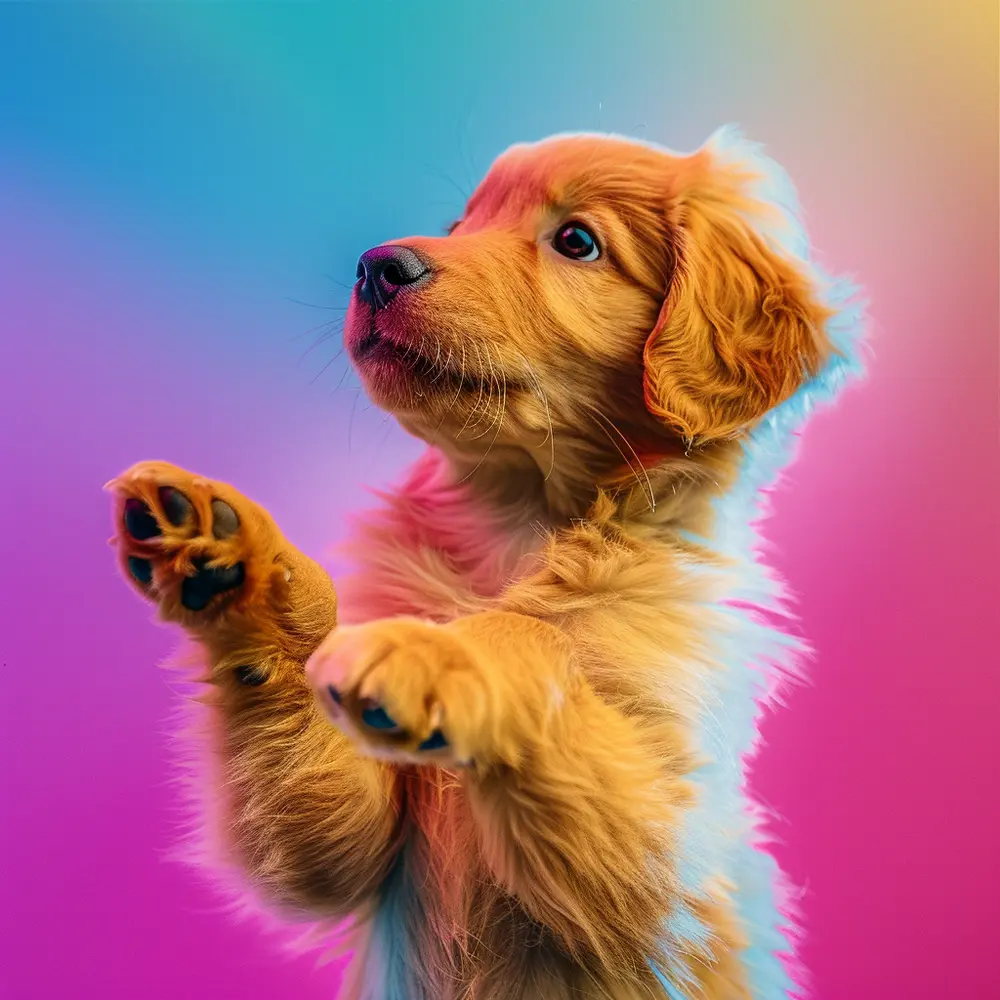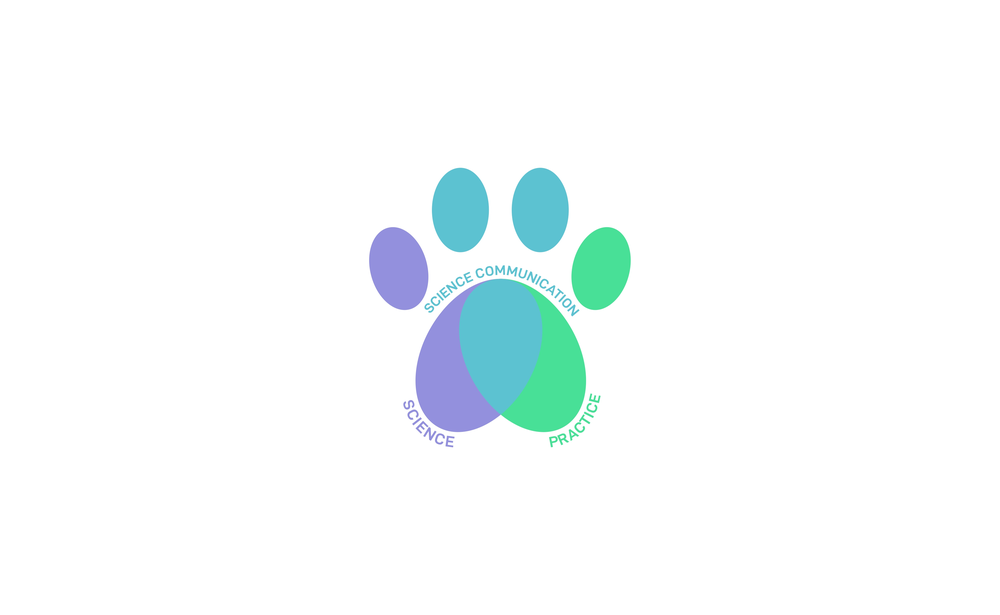Table of Contents:
Understanding Puppy Safety: The Basics of Puppy Proofing Your Home
Welcome to an essential guide on puppy safety. To begin with, understanding the concept of puppy proofing your home is vital for any (new) dog parent. Puppy proofing is much like preparing a home for a toddler; it involves creating a safe environment where your new pup can learn and explore without coming to any harm. In this section, we'll delve into the foundational steps to take when puppy proofing your home, ensuring you create a secure space that caters to your dog's curiosity and energy.
It is important to think like a puppy when you start this process. What is reachable at their eye level? What smells good to them, or looks intriguing enough to chew? Puppies have a natural drive to explore and play, and it is up to you to direct these behaviours into safe channels. This not only protects your pup but also saves your belongings from damage.
Take a systemic approach to proofing your home. Begin with one room at a time, removing potential dangers such as loose electrical cords, small objects that could be swallowed, and anything that could fall over. Pay special attention to areas where your puppy will spend the most time. Secure cabinets and drawers with child-proof locks, and consider barriers to restrict access to off-limits areas.
In summary, puppy proofing is about minimizing risks and creating a safe zone for your little companion to grow and thrive. With the right preparations, puppy proofing can be a simple, yet effective way to ensure puppy safety within your home.
Identifying Common Household Hazards for Puppies
A critical step in ensuring puppy safety is to identify and address common household hazards. These dangers, often overlooked by new owners, can pose significant risks to a young pup's health and well-being. By recognizing these potential threats, you can take proactive measures to prevent accidents and injuries.
Small objects are a common choking hazard in homes. Puppies, with their innate curiosity, may attempt to chew or ingest anything from children's toys to dropped coins. To mitigate this risk, it is crucial to keep floors and low surfaces clear of small items. Similarly, jewellery and other personal belongings should be stored safely out of reach.
Household plants may brighten up your living space, but certain varieties can be poisonous if ingested by your dog. Research which plants are safe for dogs and either remove harmful ones or place them in inaccessible areas.
Another frequent hazard comes from human food that can be toxic to dogs, such as chocolate, grapes, and onions. These should always be kept out of your puppy's reach. Secure your bins as well—ensuring lids are tightly closed—to prevent your puppy from scavenging and possibly ingesting something dangerous.
Ultimately, by identifying these common household hazards and securing potentially dangerous items, you can create a far safer environment for your puppy to explore and enjoy.
Creating a Safe and Puppy-Friendly Space
Establishing a puppy-friendly space is a cornerstone of effective puppy proofing. This area acts as a sanctuary for your pup where they can relax, play, and sleep without encountering hazards. It is a controlled environment designed to cater to their needs and keep them secure.
When designing this space, consider using a playpen or a specific room that can be easily closed off. Within this area, provide ample puppy-safe toys that encourage constructive playtime and help with teething. Soft bedding and a comfortable crate can give your puppy a sense of security and their own territory within your home.
Moreover, make sure the space is free of any hazards that have been identified; ensure cleaning supplies, medicines, and other potentially harmful substances are stored away. Ventilation is also important; proper airflow will keep your pup comfortable and reduce the buildup of harmful fumes from household products.
It is important not to leave your puppy alone in this space until they have been gradually trained to do so in very small incremental steps. Start by leaving them for just a few moments at a time, gradually increasing the duration as they become more comfortable and confident being alone. This approach helps prevent anxiety and ensures they feel safe and secure when left alone.
By creating a dedicated puppy-friendly zone, you are developing a positive environment that supports their growth and learning. This space not only bolsters puppy safety but also reinforces good behaviour by giving your dog a place that is uniquely theirs.
Choosing the Right Toys for Your Puppy's Safety
The selection of toys plays a pivotal role in puppy safety. Toys are not merely for entertainment; they aid in the mental and physical development of your puppy. However, it is essential to choose them wisely to prevent any risk of injury.
When choosing toys, opt for products that are designed specifically for puppies. These items are generally made to be durable enough to withstand sharp puppy teeth while being soft enough to avoid damaging their developing mouths. Avoid toys with small parts that could be chewed off and swallowed, presenting a choking hazard.
Also, consider the size of the toy in relation to your puppy's size. It should be large enough that it can't be swallowed but easy for them to handle and carry. Interactive toys that promote problem-solving can be an excellent way to stimulate your puppy's intellect while keeping them entertained.
Additionally, regularly inspect your dog's toys for signs of wear and damage. A damaged toy can quickly become a hazard, so it's important to replace them before pieces can be bitten off and ingested. By carefully selecting and maintaining your puppy's toys, you can ensure that playtime is both fun and safe.
Training Tips for a Well-Behaved and Safe Puppy
Training is a fundamental aspect of raising a well-behaved and safe puppy. It is not just about responding well on your signals; training enhances puppy safety and enables your dog to navigate the world without getting into dangerous situations. Here are some key tips for training your puppy:
Start with basic signals like 'sit', 'stay', 'come', and 'leave it'. These signals form the bedrock of good behaviour and control in various environments. Consistency is crucial when training, so make sure everyone in the household uses the same signals and rewards to avoid confusing your pup.
Positive reinforcement is the most effective method of training. Reward your puppy with treats, praise, or playtime when they respond to a signal or exhibit desired behaviour. This strengthens their desire to learn and promotes a positive association with following rules.
Socialization is also a part of training. Expose your puppy to different people, dogs, and environments to boost their confidence and reduce fearfulness. This can prevent anxiety-driven behaviours that may lead to safety issues, such as running away or aggression.
Remember that patience and repetition are the keys to successful training. Puppies learn through repeated exposure and reinforcement of behaviours. Be patient and persistent, and over time, your puppy will become a well-mannered and safe companion.
The Importance of Supervision in Puppy Safety
Supervision is a key element in maintaining puppy safety. Like young children, puppies are adventurous and often unaware of the dangers around them. Constant vigilance is necessary, especially during the early stages of your puppy's life when they are most prone to getting into trouble. Understanding just how critical your role as a supervisor is can make all the difference in preventing accidents.
When your puppy is out and about, keep a watchful eye to deter them from venturing into places they shouldn't. It is particularly important when your puppy is exploring outdoor areas where there may be more risks, such as roads, bodies of water, or unfamiliar terrain.
Even within the house, it may be advisable to supervise playtime. This not only prevents mishaps but also provides the opportunity to guide your puppy’s behaviour, teaching them what is and isn't appropriate to play with or investigate.
Effective supervision, combined with a safe environment and proper training, is essential to keeping your puppy out of harm's way, allowing them to grow into a healthy and happy dog.
Protecting Your Puppy from Toxic Plants and Foods
Ensuring your puppy doesn't have access to toxic plants and foods is vital in safeguarding their health and well-being. Many common household items can be dangerous to your pet, so being aware and proactive is key to puppy safety.
To protect your puppy, make a list of all plants within your home and garden, and cross-reference it with a reputable list of plants toxic to dogs. If you own any of these plants, consider removing them or placing them well out of your puppy's reach. Knowledge and prevention can significantly reduce the risk of accidental poisoning.
Similarly, be aware of foods that can harm your dog. Some foods and ingredients, such as xylitol, a sweetener found in many products, can be lethal even in small amounts. Be sure to keep all food items securely stored and clear up immediately after meal preparation and eating to avoid any scraps being eaten by a curious puppy.
Lastly, educate your family and guests about the risks to prevent them from unintentionally feeding your puppy harmful foods or plants. Signs and labels can serve as useful reminders that not all foods that are safe for humans are safe for dogs.
Preventing access to toxic substances is one of the most direct actions you can take to increase puppy safety in your home. Your diligence will help ensure your puppy grows up healthy and unharmed by avoidable hazards.
Securing Trash and Dangerous Items Away from Curious Paws
Keeping your puppy safe involves securing trash and hazardous items that could capture their curiosity. A puppy's exploratory nature can lead them to rummage through rubbish, which might contain sharp objects, toxic substances, or indigestible materials that could compromise their puppy safety.
Ensure that all bins within the home have secure lids that cannot be easily knocked off or opened by a puppy. If possible, store trash cans inside a latched cabinet or a room inaccessible to your furry friend. This simple measure can prevent a multitude of potential dangers associated with household waste.
Additionally, hazardous items such as batteries, small electronics, and household cleaners should be stored on high shelves or inside locked cabinets. Anything that could cause harm if ingested or chewed should be kept well out of paw's reach.
Consider installing safety gates or using closed doors as a barrier for areas like workshops or utility rooms that might house a plethora of dangerous items. With strategic storage and barriers in place, you can significantly lower the risk of accidental injury or poisoning, keeping your precious pup safe and sound.
Medication Safety: Keeping Pills Out of Puppy's Reach
When it comes to puppy safety, it's essential to consider the potential risks of medications. Pills and other pharmaceuticals can be incredibly toxic to puppies if ingested, and often their small size and interesting smells can attract the attention of a curious pup.
Always store medications – both prescription and over-the-counter – in secure cabinets or drawers, well out of your puppy's sight and reach. Child-proof caps are not always puppy-proof, and determined chewers may be able to breach them, so higher storage places offer an additional safety layer.
It's also important to be cautious when taking your own medication. Ensure that all pills are ingested or placed immediately back into their secure location. If a pill is dropped, locate and retrieve it immediately before your puppy has the opportunity to pounce.
By treating medications with the same level of concern as other household hazards, you greatly reduce the risk of accidental poisoning and help ensure your home remains a safe haven for your growing puppy.
Water Hazards: Preventing Accidental Drowning at Home
Water may seem harmless, but it poses a significant drowning risk to puppies who are inexperienced swimmers or unaware of the dangers. To enhance puppy safety, it is important to minimize the risk of accidental drowning within the home and its surroundings.
To start, always close toilet lids to prevent your puppy from falling in. This simple act can avert potential disasters, especially for smaller breeds that may struggle to escape once inside. Additionally, avoid leaving buckets or basins filled with water unattended, and ensure any home pools are fenced off or covered securely when not in use.
If you have a garden pond or similar water feature, consider installing a barrier or a sturdy cover that supports your puppy's weight. This will allow you to have peace of mind while your puppy is playing outside. Also, during bath time, never leave your puppy unattended in the tub, even for a moment.
Taking these measures to address water hazards can significantly improve the safety of your home for your puppy, allowing them both the joy of play and the security they deserve.
Safe Cleaning Practices in a Home with Puppies
Integrating a puppy into your home requires adapting your cleaning practices to ensure their safety. The chemicals and tools we commonly use to clean can endanger a puppy who is still learning about their environment.
When cleaning with chemicals, choose pet-friendly options to reduce the risk of irritation or poisoning if your puppy comes into contact with cleaned surfaces. Keep your puppy out of the room while using strong chemicals, and make sure the space is well-ventilated and the products are stored securely after use.
For any spills of hazardous substances, clean them up immediately and thoroughly. If using mops or buckets, do not leave them unattended where a puppy might drink from them or knock them over, possibly causing harm or ingestion of dirty water and cleaning solutions.
Lastly, dispose of cleaning wipes, sponges, and other materials in a manner that your puppy cannot access them, as these items can be choking hazards or contain dangerous residue. By implementing safe cleaning practices, you can keep your home spotless while safeguarding the health and well-being of your furry companion.
Electrical Safety: Protecting Your Puppy from Cords and Outlets
Electricity presents a hidden danger in many homes, and protecting your puppy requires preventive steps to ensure electrical safety. Puppies may be drawn to cords and outlets due to their natural curiosity and teething instincts, leading to potential harm.
Securing cords out of reach or behind furniture can prevent your puppy from chewing on them. For any accessible cords, consider using cord protectors or bitter-tasting sprays to deter your puppy from biting. This not only protects your puppy but also maintains the integrity of your electrical appliances.
Outlets should be covered with safety plugs to prevent inquisitive puppies from poking their noses or paws into them. During playtime, keep an eye on any electrical devices in use and ensure your puppy doesn't tug or chew on the cords.
Maintaining electrical safety is critical for puppy safety, and by implementing these precautions, you can significantly reduce the risk of electric shock and other related injuries in your homespun companion.
Window and Curtain Cord Safety for Your Puppy
Window treatments and their cords can present a serious risk to puppies, who may see them as enticing playthings. Ensuring the safety of your puppy means paying close attention to these potential hazards.
Start by tying up or securing curtain and blind cords out of reach, as these can pose a strangulation risk if a puppy becomes entangled. There are cord cleats and other safety devices available specifically for this purpose, which can be easily attached to walls or window frames.
Consider using cordless window coverings, which not only reduce risks for puppies but also provide a more streamlined look. If cordless options are not feasible, make sure any looped cords are cut and fitted with safety tassels to prevent your puppy's head from getting caught.
Additionally, check windows for secure screens or barriers if they are to be left open. This prevents an adventurous puppy from potentially pushing through and falling out. By being vigilant about window and curtain cord safety, you can create a safer environment that promotes peace of mind and protects your curious puppy.
Conclusion: Maintaining a Safe Environment as Your Puppy Grows
As your puppy matures, maintaining a safe environment remains a priority. Through all the stages of your dog's growth, ongoing vigilance and adaptation to their changing needs will ensure their continued safety and well-being.
Regularly reassess your home for new potential hazards as your puppy grows in size and becomes more adept at navigating their surroundings. Their increased strength and agility might lead them to explore previously inaccessible areas, so updating your puppy-proofing measures is key.
Stay informed on puppy and dog safety. As your pet's capabilities and behaviours evolve, so should your approach to ensuring their safety. This might include continued training, upgrading to stronger or more complex toys, and securing larger areas of your home.
Ultimately, the love and joy that a puppy brings into a home also come with the responsibility of safeguarding their health and happiness. With the right measures and a watchful eye, you can provide a secure haven for your puppy to thrive and enjoy life to the fullest.
Puppy-Proofing Essentials: 5 Top Safety Concerns Addressed
How can I prevent my puppy from chewing on dangerous objects?
To deter your puppy from chewing on hazardous items, secure all loose electrical cords, store personal belongings out of reach, and provide a selection of puppy-safe chew toys to redirect their chewing instinct into a safe activity.
What are common household plants that could be toxic to puppies?
Common toxic plants to puppies include lilies, azaleas, and sago palms. Be sure to search and remove any poisonous plants from your home or reposition them to keep them out of your dog's reach.
How do I ensure the food I'm keeping is not harmful to my puppy?
Store all human food, especially chocolate, grapes, onions, and foods containing the sweetener xylitol, in areas inaccessible to your puppy. Additionally, clear food scraps and secure bins to prevent your dog from accessing and ingesting toxic foods.
What is the best way to create a safe space for my puppy at home?
Create a designated puppy-friendly zone and equip this area with safe toys, comfortable bedding, and ensure it's free from hazards like electrical cords, sharp objects, and toxic substances.
What should I do if my puppy encounters a household hazard?
If your puppy encounters a hazard such as swallowing a toxic substance or an object, contact a veterinary professional immediately. Keep emergency numbers handy and consider taking a pet first aid course for urgent situations.





